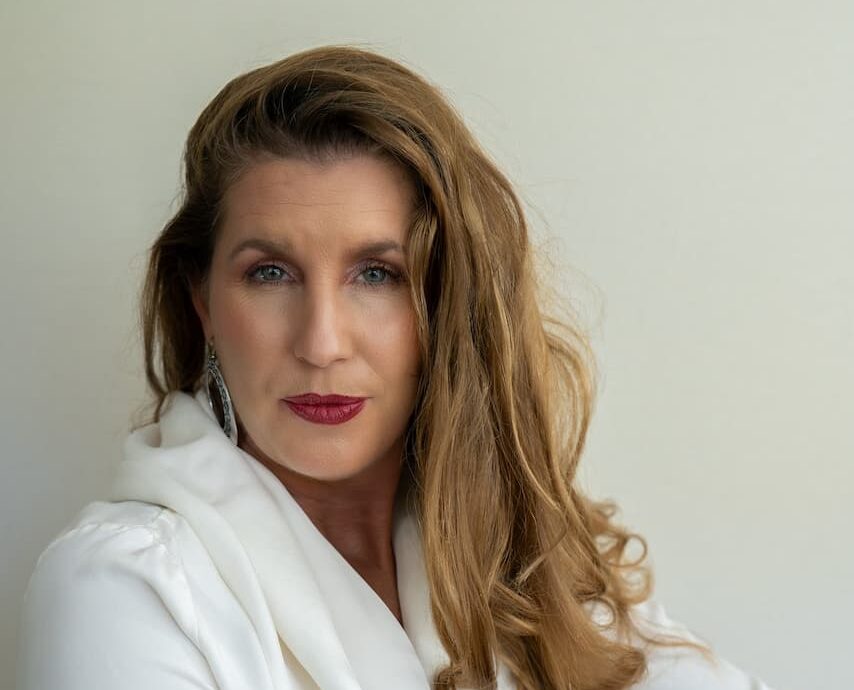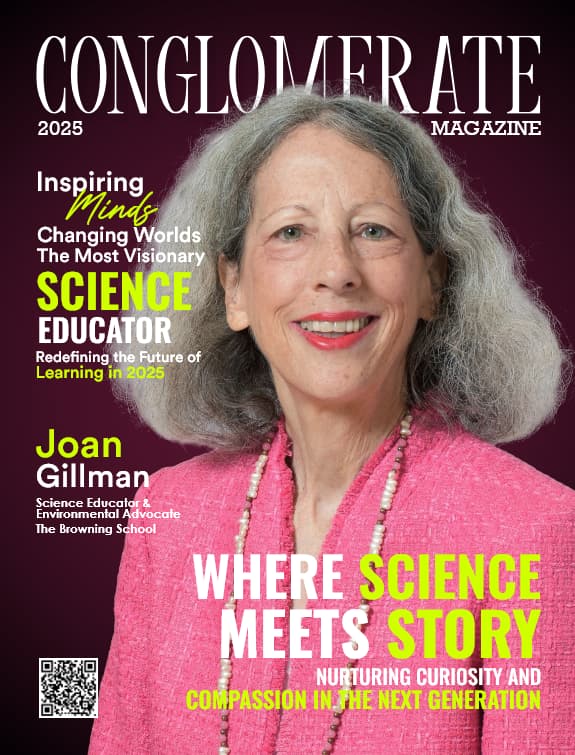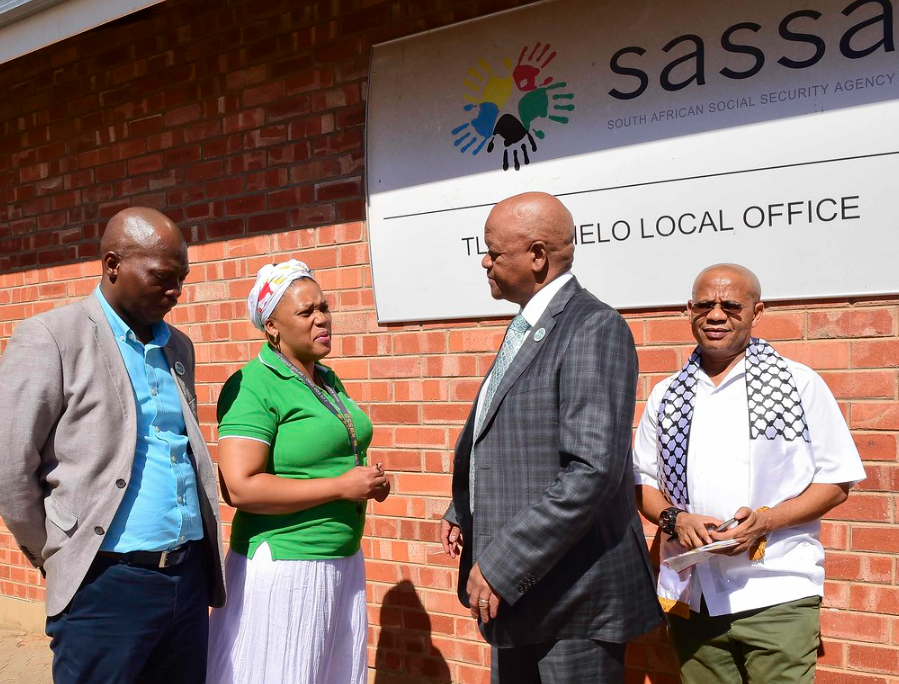In a world where nearly half of all children globally face mental health challenges, innovative approaches that transcend traditional therapy are revolutionizing trauma treatment. At the intersection of neuroscience, art, and cultural healing stands Carey MacCarthy, who has created a groundbreaking framework for addressing trauma through creativity and whole-brain integration.
Voted Top Art Therapist of The Year 2024, MacCarthy doesn’t simply apply existing therapeutic models—she builds new ones. From personal trauma to work on Native American reservations, from neuropsychology to spirituality, she consistently forges connections between seemingly disparate fields, creating a revolutionary approach that combines science and art.
From Personal Healing to Professional Mission
MacCarthy’s journey into art therapy began with her own healing journey. Growing up in a household marked by instability—an alcoholic mother with borderline personality disorder, physical abuse, neglect, and sexual trauma—MacCarthy turned to art as her sanctuary.
“I had always turned to art as the proverbial escape and understood that art was therapeutic,” MacCarthy recalls. “When I was 17, my friend told me about the profession of Art Therapy, and I knew that was what I wanted to do.”
As a young single mother, she pursued this calling with determination, entering a three-year Art Therapy graduate program where she personally experienced “Art as Medicine.” The profound healing effects she witnessed in herself—the abatement of anxiety and abandonment issues—convinced her of art therapy’s transformative potential.
Simultaneously, MacCarthy’s spiritual journey drew her to Native American cultural practices. “I had also always gravitated to Native American Culture and ceremonial way of life as this was the only spirituality that ever made any sense to me,” she explains. As a teenager, she began participating in sweat lodge ceremonies, eventually spending extended periods with Lakota/Dakota People. Through presenting at Native American behavioral health conferences, she witnessed firsthand the devastating impacts of historical trauma in reservation communities.
“I knew I needed to create something with my skillset as an Art Therapist to right the wrongs of the past and help rebuild First Nations People,” she says. “My lived experience of having been through such trauma and having healed it has made me a much better therapist and a more compassionate human, and I knew I wanted to bring my work to the Reservations and live among the Native People.”
The Science Behind START-UP! Art Therapy’s Whole Brain Healing System
What distinguishes START-UP! Art Therapy™ from conventional therapeutic approaches is its comprehensive neurobiological foundation. Developed with a combined 65 years of experience in the Art Therapy field, this system incorporates cutting-edge neuroscience to address trauma at its source—within the brain itself.
“Trauma is stored in the right brain, and art is a right brain activity with the ability to unlock trauma stored within the right brain,” MacCarthy explains. “When there is trauma in the brain the left brain can ‘turn off’. In each session, I provide a culturally competent art directive and then I include a verbal component where the students or client talks about their image, which is a left brain activity, after creating this image. The START-UP! Art Therapy Whole Brain Healing System™ literally gets both sides of the brain communicating again.”
This insight addresses a fundamental limitation of conventional therapy approaches. As MacCarthy notes, “talk therapy only accesses the left brain, without accessing the trauma stored in the right brain, which is why 25 years of neuroscience research posits that talk therapy does not work for trauma recovery.”
The START-UP! system specifically targets four key brain structures essential for achieving physical, emotional, and cognitive homeostasis. MacCarthy’s approach creates new neural networks that disrupt maladapted stress response cycles, alleviating trauma symptoms and allowing clients to access their higher brain structures—the executive functioning parts responsible for planning, decision-making, moral reasoning, understanding consequences, wisdom, compassion, and empathy.
This science-based methodology evolved from Neurodevelopmental Art Therapy (NDAT), pioneered by renowned Art Therapist Linda Chapman through 35 years of development and research at the University of San Francisco with a team of Neuroscientists. As Chapman’s former student and later colleague, MacCarthy expanded this foundation by incorporating insights from her extensive work with Native American communities, adding dimensions of cultural competence, historical trauma understanding, including more neuroscience and spirituality.
MacCarthy succinctly captures her integrated approach with a powerful equation: “ART + NEUROSCIENCE + SPIRITUALITY = START-UP! Art Therapy Whole Brain Healing System™”
Building Trust and Cultural Bridges in Native Communities
Establishing START-UP! Art Therapy™ in Native American reservations required more than just clinical expertise—it demanded authentic relationship-building and cultural respect. MacCarthy faced significant challenges in gaining trust within communities that had historical reasons to be skeptical of outsiders.
“There are also a lot of white people that come to do research on Native Americans and take the data, or culturally appropriate their sacred ceremonies or come in with their programs to ‘Save the Indians,’” MacCarthy acknowledges. “The biggest hurdle was establishing trust, getting buy-in and having them understand my heart was in the right place.”
This trust-building wasn’t accomplished overnight. It required years of presence, participation, and genuine commitment. “Years of me living there, going to powwows, sweatlodges, ceremonies, working with the communities, marrying a Lakota man… constantly proving myself and my commitment to help heal their People,” she recalls.
MacCarthy’s dedication led her to move from California to the Santee Sioux Nation Reservation in Western Nebraska with minimal financial resources, where she worked as a Tribal Historical Preservation officer while developing her program. During this period, she traveled extensively throughout Indian Country, learning to identify sacred sites and burial grounds while simultaneously meeting with principals, teachers, school counselors, and attending School Board Meetings to introduce her therapeutic approach.
“I developed the program while living on the reservations, specific to the needs of the Native American children and what they faced as a community,” she explains. This immersive approach eventually led to professional recognition, particularly after MacCarthy began working at the Indian Health Service Hospital on Pineridge Reservation in South Dakota and presenting at major Native American Behavioral Health Conferences nationwide.
Measurable Results in Treating Complex Trauma
The efficacy of START-UP! Art Therapy™ is supported by research conducted at three different universities with both Native American and non-Native children. These studies demonstrated significant reductions in anxiety, depression, anger, trauma symptoms, dissociation, avoidance/numbing, re-experiencing of trauma, and arousal states, alongside increases in resilience, mood, and self-esteem.
One particularly striking case involved a 27-year-old woman from the Choctaw Nation diagnosed with Dissociative Identity Disorder (DID), often considered one of the most challenging mental health conditions to treat. Through MacCarthy’s approach, this client—who initially presented with six distinct personalities or “alters”—achieved full recovery in just six months.
“Through START UP! Art Therapy™, D was able to externalize her inner experiences by drawing and naming each of these alters—a powerful first step in reclaiming her sense of self,” MacCarthy recounts. “As we worked together weekly over eight months, at the six-month mark, she reported that the voices had disappeared and remained gone—D gradually regained control and ownership of her identity.”
Another success story involved acute trauma treatment for a child on a Native American reservation who had survived a serious car accident in which he and his cousins were ejected from a vehicle driven by an intoxicated uncle. The child, already in treatment for chronic trauma issues, suddenly began experiencing intrusive flashback images, poor concentration, and nightmares following the accident.
“P did a few sessions of the START UP! Art Therapy Whole Brain Healing System™ acute trauma protocol, and P found complete symptom abatement after just 3 sessions!” MacCarthy shares. “P gave me a big hug, and said, ‘Thank you for helping me!’”
Transforming Education through Mental Health Integration
MacCarthy’s vision extends beyond individual therapy sessions to systemic change in educational settings. With 47% of children suffering from depression and anxiety globally—with even higher rates in Native American and other underserved populations—she sees classroom integration of trauma treatment as essential.
“These children become incarcerated youth in juvenile detention centers, then become adults within the privatized prison systems, who then eventually become parents and repeat the cycle of intergenerational trauma,” MacCarthy observes. “This cycle needs to be disrupted by proven prevention and early intervention programs designed to treat trauma while including social emotional learning and life skills, wrapped into one.”
The START-UP! methodology is designed to be implemented in every K-12 classroom and juvenile detention center, giving all children the opportunity to heal from trauma while developing optimal cognitive and emotional foundations. Facilitators trained in the system report significant improvements in classroom behaviors, impulse control, self-esteem, emotional regulation, and peer relations, along with reductions in anxiety and depression.
“To address the urgent need of this worldwide mental health crisis, the only solution is to implement a mental health curriculum within the classroom so ‘no child really isn’t left behind,’” MacCarthy asserts.
This educational approach connects to her broader vision for societal healing. “At this moment in history, humans are statistically at an all time high of mental health conditions, with 65% of adults on antidepressants and 75% on medications for stress-related and preventable conditions,” she notes. These mental health challenges affect not just individuals but entire communities and societies.
“These children of our dysfunctional society then become the adult decision-makers of the world. They become the government who steward the people and the planet…or not. If these decision-makers are not mentally competent, both people and the planet suffer,” MacCarthy explains. This insight informs her brand slogan and mission: “Heal the People. Heal the Planet, because a healthy mind is the foundation of everything.”
Balancing Indigenous Wisdom with Modern Applications
MacCarthy’s approach to spirituality within therapeutic contexts is both principled and pragmatic. Her extensive training in Traditional Ways of the Lakota Tribe and the Red Road Approach to Healing has informed her curriculum, yet she emphasizes the importance of cultural competence and respect for diverse belief systems.
“In my years of spiritual connection to the Traditional Ways of the Lakota Tribe and formal training in the Red Road Approach to Healing, I was able to create a comprehensive curriculum designed for and tailored to the Native American people, but also culturally competent to ALL Cultures,” she explains.
MacCarthy cautions practitioners about making assumptions regarding cultural and spiritual preferences. “After living on the reservations for many years, I learned that there is a spectrum of cultural beliefs due to colonization and historical factors,” she notes. “About 60-70% of Native families in the Great Plains Tribes are what is referred to as Contemporary (Christian-based) and 30-40% are Traditional. Some families and individuals practice both and some Contemporary families are beginning to return to their Traditional Ways.”
This understanding of complex cultural dynamics informs her guidance to trainees: “I advise my trainees to proceed with caution when including spiritual or cultural teachings into the START UP! sessions, as their students/clients and their families might not have this same belief system.”
The Essential Role of Play in Healing Trauma
A distinctive aspect of MacCarthy’s approach is her emphasis on “healing while having fun.” This philosophy recognizes that creative engagement and play are not merely adjuncts to therapy but essential components of the healing process.
“Everyone loves to play… It takes the work out of healing,” MacCarthy explains. “People of all ages can access their child self and enjoy a moment to regress and take a break from adulting. Unfortunately most adults have lost touch with their ability to play, so we make it a little easier to reconnect to that part of themselves.”
This playful approach creates immediate benefits in training environments as well. “During the trainings I have roomfuls of adults creating, sharing and laughing together and everyone leaves feeling bonded, connected to themselves while learning a valuable trauma treatment system that they can use for a lifetime both personally and professionally!”
For children, this approach aligns naturally with their developmental stage. “I designed this trauma treatment program to be light and positive, incorporating social/emotional learning and life skills, rather than directly talking about the trauma and triggering a classroom of kids. Children have a great time and never even know they are in a therapy session!”
The efficacy of this approach is grounded in neuroscience. “The very act of creativity is largely about problem-solving while trying something new, which by nature builds new neural circuitry and part of the science of why Art Therapy works so well,” MacCarthy notes. “The START-UP! Art Therapy System™differs from standard Art Therapy in that it is a scientifically designed system incorporating a directed use of the creative process and specific art materials to elicit certain responses within each part of the brain.”
Expanding Global Impact Through Cultural Bridges
MacCarthy’s bilingualism and cultural adaptability have positioned her work for global application. Her fluency in Spanish, which began with language classes at age 12 until University immersion classes and latin American travels, has evolved into a deep cultural connection that informs her current work in Mexico, where she now lives most of the year.
“I taught daily group Art Therapy classes bilingually in hospitals where I had long term Spanish-speaking patients and also individual sessions, I have translated for doctors in psychiatric hospitals, and now I am in process of translating my programs into Spanish and working with schools and behavioral health across Mexico and Latin America,” she shares.
This expansion addresses significant needs among vulnerable populations. “Every day I speak with my Mexican people and hear horrific stories of trauma and poverty, whether from crossing the border and the abuse of coyotes or the U.S. government while being detained, or childhood abuse and hunger from being poor, and even being kicked out of the home at a young age, being left to fend for themselves with many young girls turning to prostitution or being trafficked.”
MacCarthy’s expanding vision for 2025 and beyond includes launching new online trauma recovery programs, creating in-person retreats in Tulum, Mexico, hiring additional trainers to implement programs globally including in war zones, and working with various governmental agencies including the Bureau of Indian Education and the Department of Health and Human Services. The latest project is in Uganda, Africa, providing no cost online START-UP! Art Therapy System™ trainings to a team of professionals and teachers within a refugee camp serving 200,000 men, women and children who have been impacted by the US AID funding cuts.
Personal Resilience in Emotional Work
The depth and breadth of MacCarthy’s work with trauma might seem overwhelming, yet she maintains remarkable resilience and enthusiasm for her mission. Rather than experiencing burnout from hearing others’ trauma stories, she finds meaning and energy in these connections.
“Throughout my life, I have always been one of those people who people tell their entire life story to while in the grocery store, or sitting on a bus, and they say, ‘I have no idea why I just told you all this…’ I get energized and feel alive when I connect deeply with people and hear their stories,” she explains.
Her personal practices for staying grounded include “mindful, joy filled life, giving gratitude daily for all that I have been through and what it has taught me, and who I have become in spite of my experience.” She maintains connection through “deep spirituality and connection to Spirit and my Native American & Mexican spiritual communities, as well as the ocean, art, yoga, nature, music and most of all playing with my sweet little grandbaby!”
MacCarthy embodies her teaching about playfulness and healing in her personal life. “I believe in childlike curiosity—I still swing on the swingset at the playgrounds and boogie board in the ocean at age 53!” she shares. She also emphasizes the healing power of humor, which she learned from Native American communities: “Laughter is the best medicine that I learned from the Native American Tribes I have lived with—they are always teasing and making jokes and makes you laugh so hard you can barely breathe… Finding the humor in your own tragedies is very important and good medicine.”
A Vision for Accessible Healing
For those inspired to follow in her footsteps, MacCarthy offers pragmatic guidance. “The advice I would give to aspiring therapists, educators, and healers who want to make a difference through trauma-informed, culturally sensitive care is to find a proven model that has research proving its efficacy and replicability to follow. Something that calls to your spirit and inspires you, but also to that of the people you serve—that is culturally sensitive care.”
She particularly cautions those entering the growing coaching industry without formal clinical training: “Non-therapists do not understand the fragility of trauma and if not professionally trained, lack the expertise to safely guide clients, which can result in severe consequences.” Her comprehensive two-day training program addresses this need by providing structured guidance for both professionals and laypeople.
Above all, MacCarthy emphasizes that healing is accessible to everyone, regardless of past experiences. “It is never too late to heal trauma—there is no statute of limitations,” she affirms. “The brains’ neuroplasticity is malleable and will always be able to change and heal depending on the thoughts and environment you provide it.”
Her message reflects both her scientific understanding and her passionate commitment to transformation: “START UP! Art Therapy™ is here to partner with you and your organization. We are on a mission to heal trauma in ALL Cultures and ALL ages, one classroom, and one therapy office at a time. HEAL THE PEOPLE. HEAL THE PLANET.”







